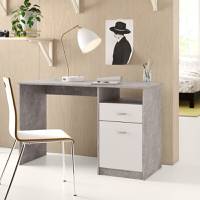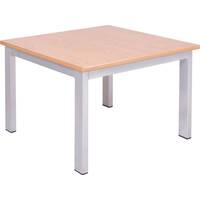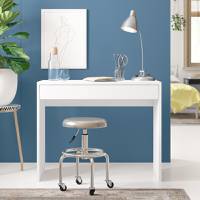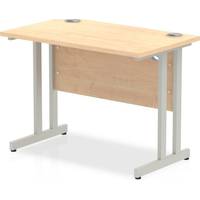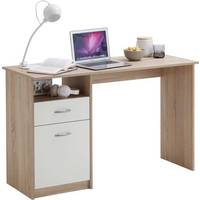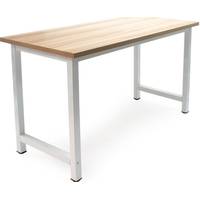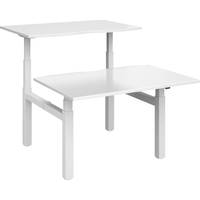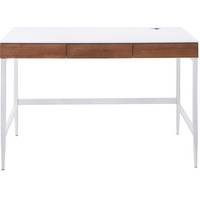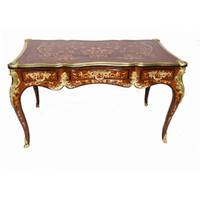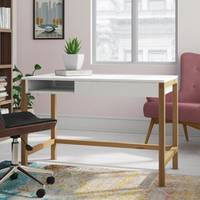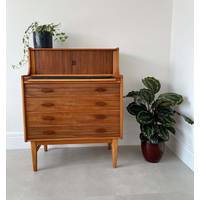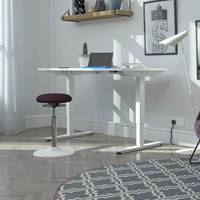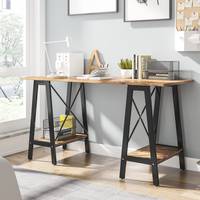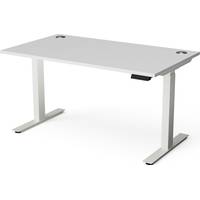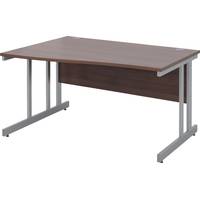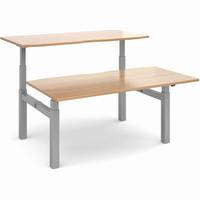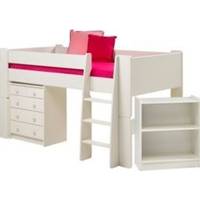Zanotta Quaderna Desk - / 132 x 54 x H 75 cm
Price Tracked On This Product
Highest price was seen £4,428.00 on 29 Dec 2022
Lowest price was seen £3,754.00 on 07 Oct 2022
Average price is £3,877.28 base on 3 price changes
Most recent price is £4,428.00
[[{"meta":"07 Oct 2022","value":3754},{"meta":"27 Nov 2022","value":4357},{"meta":"29 Dec 2022","value":4428}]]
Description
Zanotta Desk White Plastic material. Dimensions: L 132 × D 54 cm x H 75 cm. Hailed as a manifesto of the radical design of the 1960s/70s, the Quaderna collection by Superstudio is celebrating its 50th anniversary! Having been awarded numerous distinctions and exhibited in the most prestigious museums around the world, these wooden furniture pieces with minimalist lines are covered with plastic laminate screen-printed with a black grid pattern. This simple and meticulous grid makes a big visual impact and it forged the collection's identity. Quaderna has succeeded in retaining its relevance, beauty and modernity over the years.Founded in Florence in 1966, group of avant-garde architects Superstudio claimed, in these years of challenges and protests, a radical and iconoclastic take on architecture. Quaderna, their series of conceptual furniture pieces, was designed between 1969 and 1972. Initially named Misura M, the collection was renamed Quaderna and released to production by Italian creative house Zanotta in 1972.To celebrate the 50th anniversary of Quaderna, Zanotti is releasing three brand new pieces: a desk, a coffee table and a surprising rug. The coffee table and desk are original pieces from the Misura M series by Superstudio: Zanotta has selected these two projects from the series' historic catalogue and has given them a makeover, bringing their dimensions up to date, adding a drawer to the desk, whilst making sure that the Superstudio philosophy is still respected. The Quaderna rug is hand-tufted and made from velvet-effect New Zealand wool. It accurately reproduces one of the architecture histograms found in the archives of Cristiano Toraldo di Francia (1941 - 2019), one of the co-founders of Superstudio. The Quaderna collection immerses us in Superstudio's world of counter-culture and architectural utopia. At the beginning of 1969, Superstudio designed the Istogrammi, also named Tombs of Architects. The Histograms are presented in the form of a catalogue of 30 3D diagrams, covered with a grid that can be transposed onto various scales. This checked pattern is a neutral surface, a space exempt of any cultural conditioning. This uniform and isotropic surface can be endlessly developed and can be used for designing objects, furniture, environments and architecture. With The Histograms, Superstudio intended to found a new, universal system: An infinitely adaptable unique design, breaking free of all conventions and pre-conceived notions of design and architecture. Infinite grid in which everyone can live (and die) without being physically or spiritually consumed (Superstudio), the Histograms refer back to the notion of immutability, and to the search for an inalterable image of nature. The Histograms are a new mental process, broken away from models and imitations. This infinite grid can be found in everything: Territory, furnishing objects, architecture, cities, in a total flattening of the typologies of classicism. Architecture is nothing more than a mental diagram, an grid without a beginning or end. The Histograms simultaneously represent the ultimate efficacy of the system and its negation: By becoming the module of all possible uses and functions, they actually invalidate the need to invent new forms and induce new needs. This way, this grid-shaped network on a white background has become a paradoxical expression of absolute liberty.In 1972, for the The invention of the neutral surface (1972), Superstudio collaborated with AbetPrint to create a white plastic laminate printed with their famous orthogonal grid, composed of 3 x 3 cm black squares. With this new material, the group created a whole collection of furniture, named Serie Misura M: Minimalist wooden volumes that are simple and meticulous, recovered with this checked plastic laminate. The simple shapes highlight the geometric network which stretched over all of the surfaces.The group first tried to produce its furniture itself, calling on the skills of local retailers and craftsmen. It was a failure: Nobody believed in their project. In the end, it was Aurelio Zanotta who saw the potential and accepted to produce these furniture pieces, renaming the collection Quaderna. The essentially theoretical reflection of radical architecture was then transformed into a real product. Aurelio Zanotta decided to present this new furniture to the world in Paris, in 1972: To mark the occasion, all employees working on the stand at the trade fair wore jackets decorated with the famous checked pattern!The Quaderna collection is the result of a process that is both industrial and extremely artisanal. Whilst the grid is created by digital printing, the plastic laminate parts are applied individually by hand in a precise sequence, so that all of the lines coincide (it takes around 8 hours to create a single piece). The perfect convergence of the grid's lines determine the total uniformity of the surfaces, giving the furniture a strong, aesthetic character.Superstudio: We've prepared a catalogue of non-continuous 3D diagrams, a catalogue of architecture histograms referenced to a network that can be transposed into various sectors or into various scales, edifying a calm and immobile nature in which the self can finally be recognised. From the histogram catalogue, we were then able to easily generate objects, furniture, environments, architecture…
You may also like
loading
Discover more









































